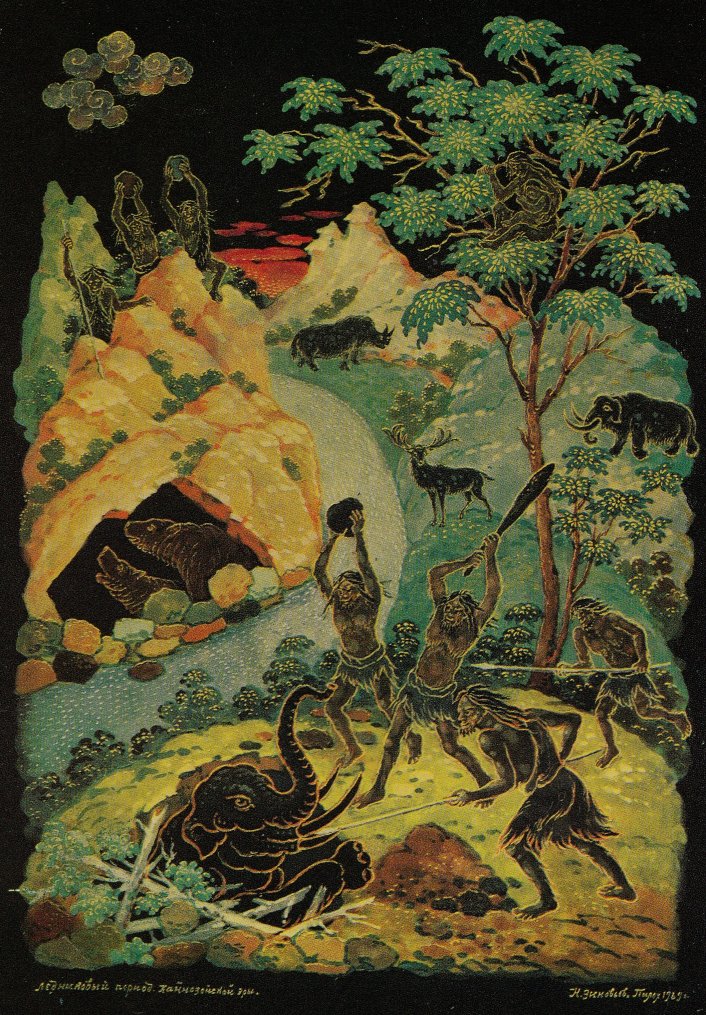1.11: Last Great Glaciation
- Page ID
- 49656
Movements of continents in this epoch led to very adverse consequences. Panama and Suez isthmus closed, Antarctica gradually shifted to the area of the South Pole, and the northern continents surrounded the Arctic region as a ring. Everything now was ready for new Great Glaciation.
Life in the seas has not changed much. At the beginning of the epoch, due to the dryer climate and the progressive development of herbivorous mammals, grasslands were extensively expanded. These areas were inhabited by a fauna in which various proboscis, ungulates, rodents, and predatory mammals dominated.
One of the most curious episodes of this era was the Great Inter-American Exchange, the result of the formation of the Panama Isthmus. South America, isolated so far from all other continents (like Australia now), experienced the invasion of more advanced North American groups. Some South American animals have successfully withstood this onslaught and even advanced far to the north (opossums, armadillos, porcupines). However, the more significant part of the South American fauna went extinct.
After the formation of the glaciers, the rich Antarctic fauna and flora also died out, the last remnants (refugia) of which are now in the remnants of flooded Zealandia continent: now islands New Zealand, Lord Howe, and New Caledonia.
The advent of the glacier led to the formation of another type of community, arctic steppe: tundra, which advanced or retreated along with the ice.
The final accord of the development of the biosphere in this era was the appearance (most likely in East Africa) of representatives of the species Homo sapiens L.



